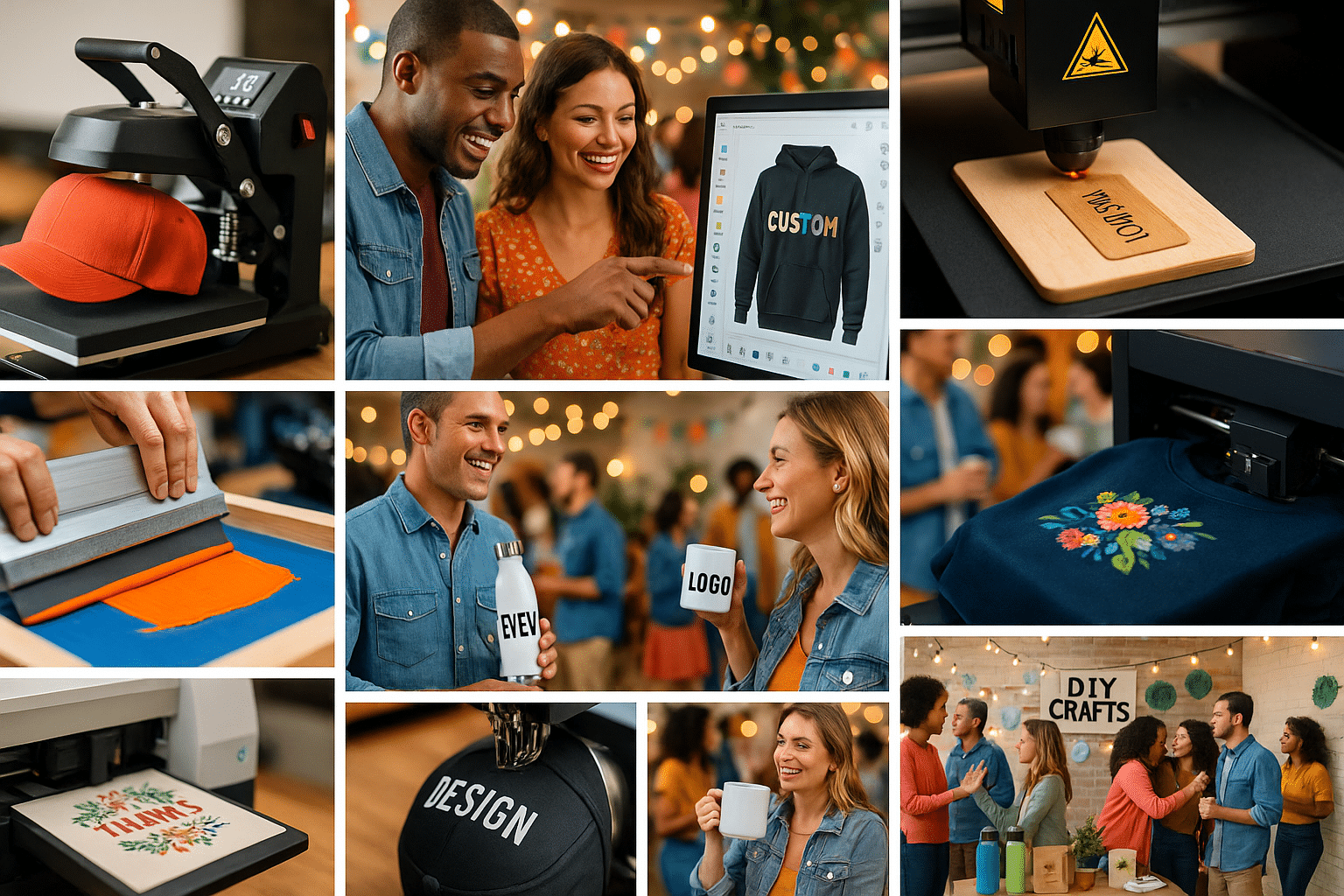Essential Event Planning Tips for Unforgettable Experiences
Essential Event Planning Tips for Unforgettable Experiences

Planning an event can be a daunting task, but with the right tips and insights, it can become a rewarding experience. This article explores essential event planning tips, interactive trends, DIY inspirations, and effective marketing strategies to achieve event success. Dive into diverse items like thermal bottles, mugs, and photo booths to make your event unforgettable.
Mastering the Art of Event Planning
Effective event planning is both a science and an art, requiring careful consideration of various components to craft an unforgettable experience. Understanding the purpose of the event and identifying the target audience form the bedrock of successful planning. For instance, a corporate event may prioritize networking and professional development, while a social gathering may focus more on entertainment and personal connections. Taking the time to outline the event’s goals ensures that every decision made aligns with this vision.
Budgeting is another crucial aspect that shapes the event’s scope. It is essential to develop a comprehensive budget that includes everything from venue rental to catering, entertainment, and marketing costs. You might find that allocating resources towards unique merchandise such as customized thermal bottles, mugs, or hoodies can create a lasting impression. Not only do these items serve practical purposes, but they also foster a sense of community and brand loyalty. When considering whether to hire a photo booth, the cost also needs to be factored into your budget. Understanding the average photo booth cost will allow you to compare options effectively, ensuring that you still have room for all essential elements of your event.
Scheduling plays a pivotal role in the planning process as well. Select a date and time that accommodates the majority of your target audience. Consider local events and holidays that may coincide with your planned date, as this can affect attendance. As you finalize timelines, ensure you create a checklist that covers all tasks—from the initial planning stages to the event day and post-event follow-up.
The venue selection is where the magic begins to take shape. A location should reflect the theme and purpose of your event while being easily accessible for your target audience. Whether it’s an intimate gallery space or a large convention center, ensure the venue has the necessary facilities and ambiance to accommodate your desired activities, including interactive features like a photo booth. The right venue can enhance the overall experience and provide opportunities for engaging activity stations.
Creating a memorable experience often involves innovative themes that resonate with your attendees. A well-chosen theme informs all aspects of the event—from decorations to food and even merchandise. Consider how themes can incorporate interactive elements to foster a sense of participation among guests. For example, using a retro theme may encourage attendees to dress in period-appropriate attire and share their experiences in a vintage-style photo booth, making it a focal point of the event.
Interactive trends are quickly becoming the cornerstone of successful events. Incorporating elements such as photo booths allows attendees to engage with the event on a personal level. These booths offer a unique opportunity for guests to capture memories, which they can take home with them, often in the form of customized printouts that serve as mementos of their time spent at your event. You’ll find that utilizing keywords like “hire photo booth,” “photo booth cost,” and “buy a photo booth” will help draw relevant traffic to your blog, offering value to those who are researching planning options.
Furthermore, incorporating interactive items like merchandise enhances participation and boosts brand visibility. Think about items that your guests can relate to, such as practical thermal bottles for outdoor events, stylish caps for brand promotion, or even luggage tags that appeal to frequent travelers. Providing customized goods not only adds excitement but also creates a personal connection that extends beyond the event itself, keeping your brand alive in your attendees’ daily lives.
DIY projects serve as an excellent way to add personalization while remaining cost-effective. They allow you to infuse your creative touch into various aspects of the event, from centerpieces made of cardstock to personalized gifts for attendees. Initiatives like crafting unique banners or creating a photo backdrop with assorted props encourage attendance and social sharing. Guests are likely to share their creations on social media, amplifying your event’s reach beyond its physical confines and generating interest for future events.
Marketing your event is equally important to ensure maximum attendance and engagement. Developing a tailored marketing strategy means leveraging social media, email newsletters, and online event platforms to reach your audience more effectively. Promote any interactive features, such as the availability of a photo booth, to generate buzz. Creatively showcasing merchandise like custom mugs or caps in promotional materials can also encourage people to sign up and engage in what your event has to offer.
Don’t forget the power of behind-the-scenes insights and sneak peeks prior to your event. Sharing the planning process through social media posts can create anticipation and excitement among your audience. Giving them a glimpse of the interactive experiences and personalized items they can look forward to will generate conversations and increase RSVPs.
The behind-the-scenes stories of event success can offer valuable lessons and inspiration for future planning endeavors. Post-event reflections, client testimonials, and attendee feedback can all be used as content for your blog, enhancing your SEO strategy while positioning your brand as a thought leader in event planning. The stories you share can resonate deeply with potential clients, showcasing how interactive elements like photo booths and customized merchandise contributed to overall event success.
By combining these essential elements—clear objectives, ample budgeting, innovative interactive trends, DIY personalization, and effective marketing strategies—you can master the art of event planning and create experiences that linger in the hearts and minds of your attendees long after the event concludes.
Conclusions
In conclusion, mastering the art of event planning involves careful organization, creativity, and effective marketing. By focusing on interactive trends, DIY inspirations, and utilizing unique items such as photo booths and customized products, you can elevate your events to new heights, ensuring memorable experiences for all attendees.




